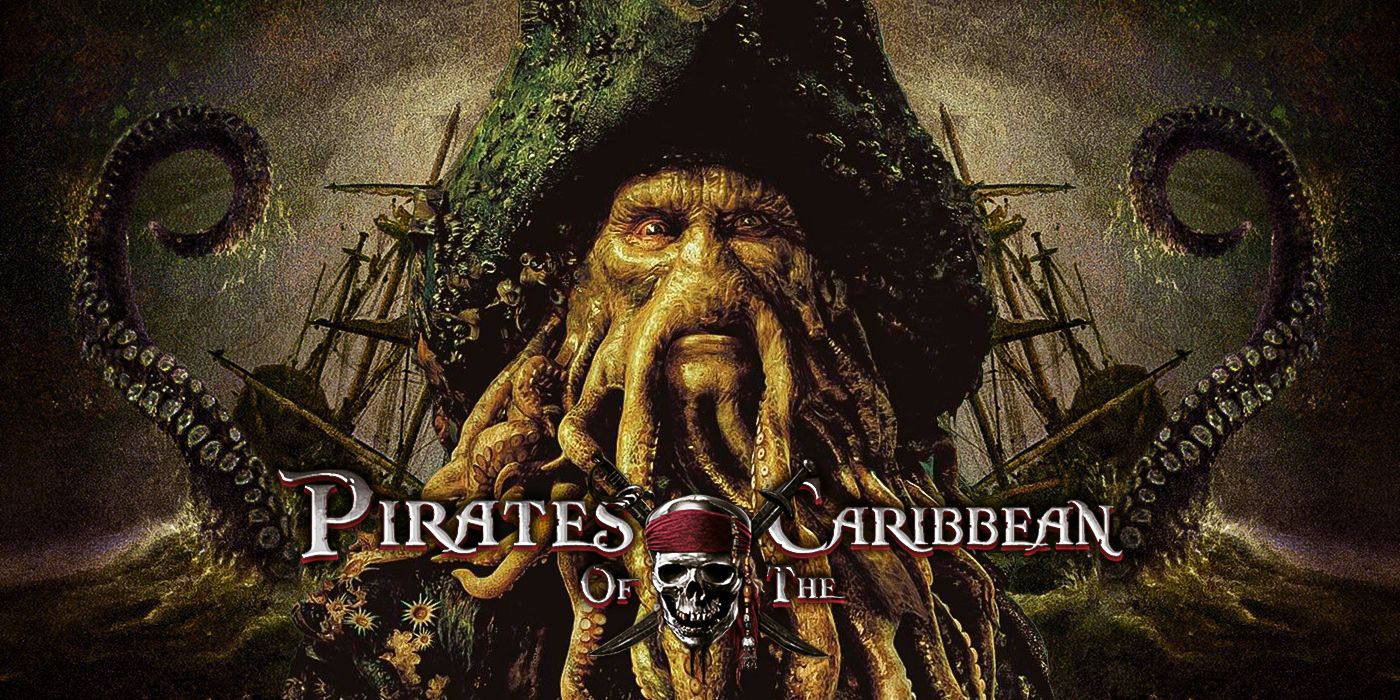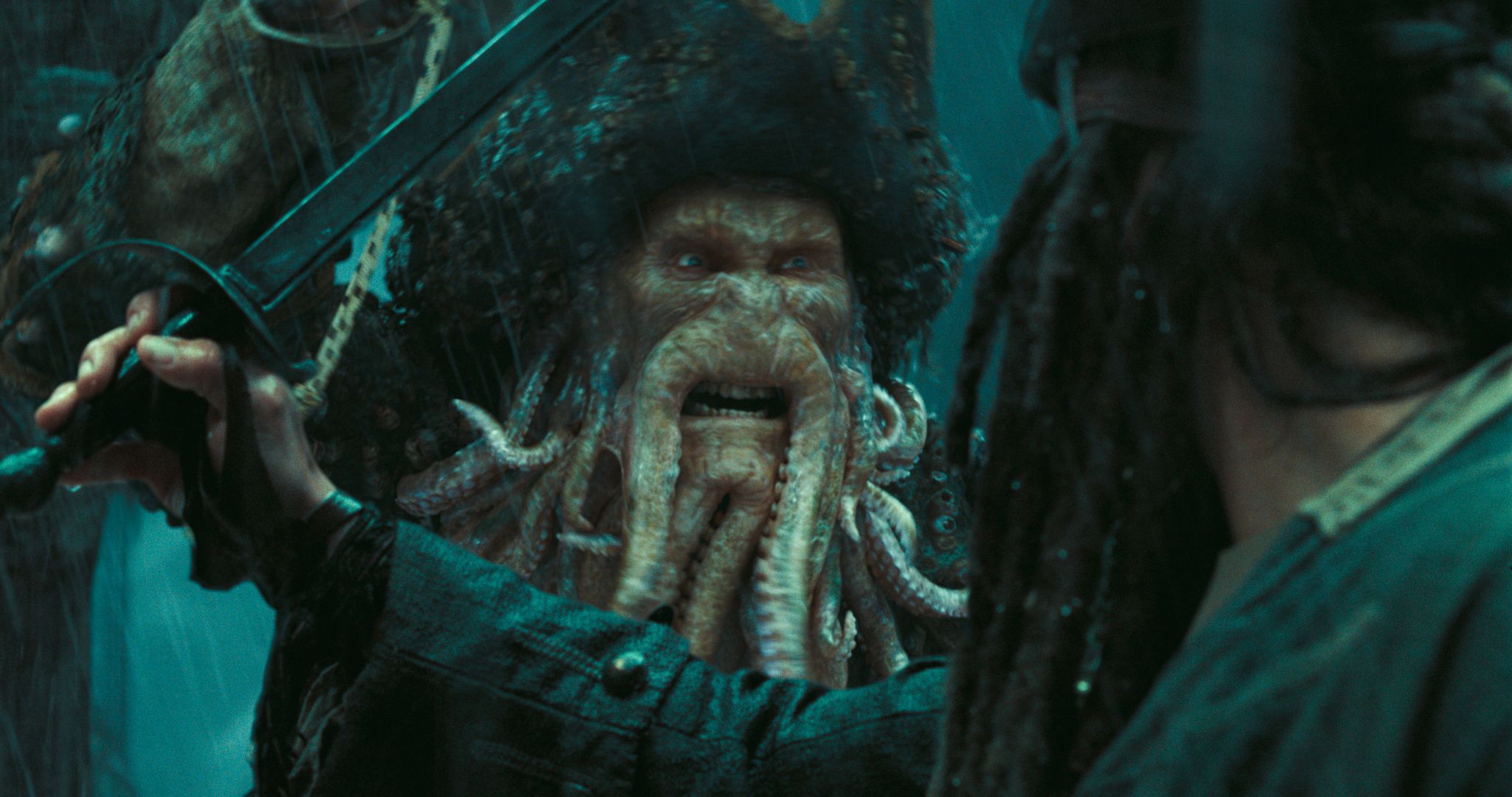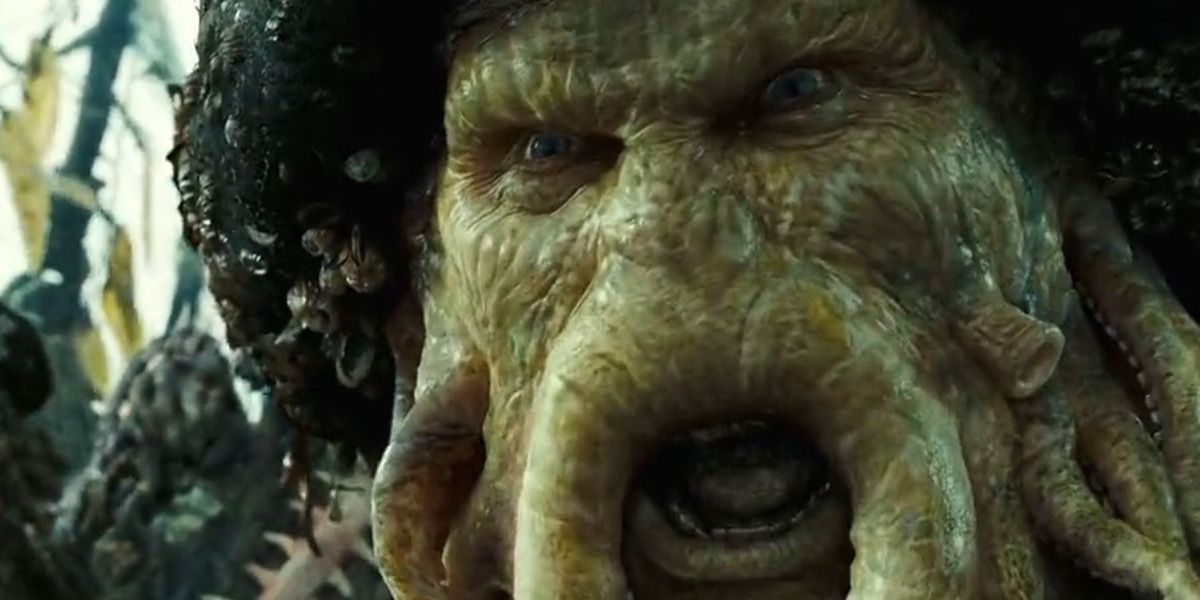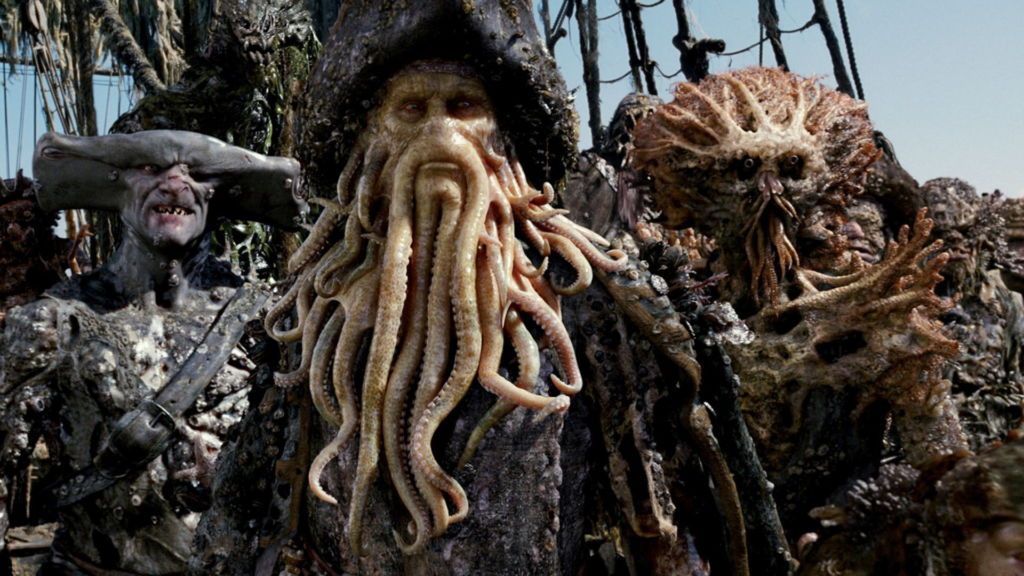Visual effects have progressed to a point where even small-budget films can bring a filmmakers' vision to life. Spaceships, terrains, water, and so much more can be created pretty seamlessly with computers nowadays. Even films you wouldn't think would use visual effects, like Steven Spielberg's Cold War spy drama Bridge of Spies, use extensive visual effects. While digital backgrounds and environments have been a bit more commonplace for a long time, as an extension of the classic use of matte paintings and rear projection, one of the more compelling uses of visual effects and computer animation is that of digital characters. Crafting a character in a computer requires a tremendous amount of skill to convey the reality of that figure, and there has not been a more effective use of the technology than Gore Verbinski's Pirates of the Caribbean sequels with the character of Davy Jones, played by Bill Nighy.
Digital character animation and motion capture have been popular techniques for a lot of blockbusters. Before Davy Jones, there was the pioneering work done with Gollum on Peter Jackson's Lord of the Rings trilogy. Due to the character's popularity, seemingly every big franchise now has to include some sort of digital character. The highest grossing film of all time, Avatar, is mostly a cast of digital characters, and Marvel, the biggest cinematic franchise of the moment, spent years building to an epic confrontation with a giant digital creation in Thanos (Josh Brolin). Digital characters even have their own mascot with Andy Serkis, who not only portrayed Gollum but also Caesar in the recent Planet of the Apes trilogy, Captain Haddock in The Adventures of Tintin, and the titular King Kong in Peter Jackson's remake. Even the Paddington films, everyone's favorite duology about a nice bear, are centered on a digital character.
While many of these characters are beloved and serve their films wonderfully, very rarely do they actually convince you that the thing you are looking at is real. Paddington is a perfect creation and one of my best friends, but he clearly looks like something made in a computer. Expertly made in a computer, but a computer nonetheless. This brings us back to the remarkable creation of Davy Jones, as he is the only one where the seams of digital origins really are not apparent. The design and integration into the in-camera material blends together so beautifully that you forget that what you are seeing isn't real. Davy Jones stands out from the crowd due to his ability to utilize a key element from Nighy's performance — his eyes. It's a design that leans into the limitations of computer graphics, but interacts with the environment.
When you think of the worst digitally created characters in film, the thing that sends it straight into the uncanny valley are the eyes. Not to be too hacky about it, but the eyes are the windows to the soul. They connect us to the people on screen because we can see their thoughts. Eyes are one of the most difficult things to believably recreate in a computer and are often the major roadblock in audiences buying into seeing these digital creations as actual flesh and blood. Think back to all of Robert Zemeckis' entirely motion capture films or young Jeff Bridges in TRON: Legacy. The digital dead eyes all those characters have are, at best, distancing and, at worst, horrifying.
Pirates of the Caribbean gets around this with Davy Jones by actually using Bill Nighy's eyes for the character. He is wearing a motion capture suit, and everything else around him is animated. However, those windows to the soul are all his, and being able to look into those eyes to see what is happening inside this squid man's head is invaluable to connecting with him. They get to completely avoid the number one pitfall that plagues character animators and effects artists. If it can be real, just make it real.
Another problem so many digital artists face, particularly back when this film was made, was the ability to recreate skin, whether it be how it absorbs light or how it stretches. Digital people, a lot of the time, just looked shiny or like plastic. This is partly why Pixar decided their first movie should be Toy Story, because that plastic look would be perfect for a collection of characters who are toys. That shininess also is enormously beneficial for someone who is mostly a sea creature. The tentacled face of Davy Jones is wet and slimy to the point where it is always glistening. Having a digital render that comes off as shiny perfectly compliments that sea creature look. The effects artists also nail how different kinds of light would bounce off that slippery skin, be it sunlight or fire.
Finally, the way Davy Jones interacts with the environment really puts the capper on selling to the audience that this is a real person. Seeing how each tentacle on his face responds in its own unique way to being blown by a gush of wind or raindrops hit his face during a storm feels utterly real and tangible. The bravura scene of Jones playing the organ with his tentacles is what really pushes it over the edge. Verbinski and everyone involved could not have asked for a better combination of animation, set design, light, and sound than what appears in the film.
Visual effects supervisor John Knoll, animation supervisor Hal Hickel, additional visual effects supervisor Charles Gibson, and special effects supervisor Allen Hall all rightfully took home the Academy Award for Best Visual Effects for their work on Pirates of the Caribbean: Dead Man's Chest and were nominated again the following year for Pirates of the Caribbean: At World's End (losing out to The Golden Compass, which was a huge mistake). Their awards success was in no small part because of how expertly done the character of Davy Jones is. That character is truly a visual effects triumph that still impresses visual effects artists today.
Keep in mind, Verbinski's two Pirates of the Caribbean sequels were afforded gigantic budgets. At World's End, at the time, was the highest budgeted film of all time, with a whopping $300 million. It is still the fifth highest of all time, third if you adjust for inflation. Even with all that money, the effects still could be rushed or not as well planned out as they were. They used the enormous budget they were given and put every ounce of artistry and craft into their work as they possibly could. The result remains the high watermark for digital characters in cinema, period. After people realize that, maybe we can start talking about how tremendous those two Verbinski sequels are as a whole. It is time.




